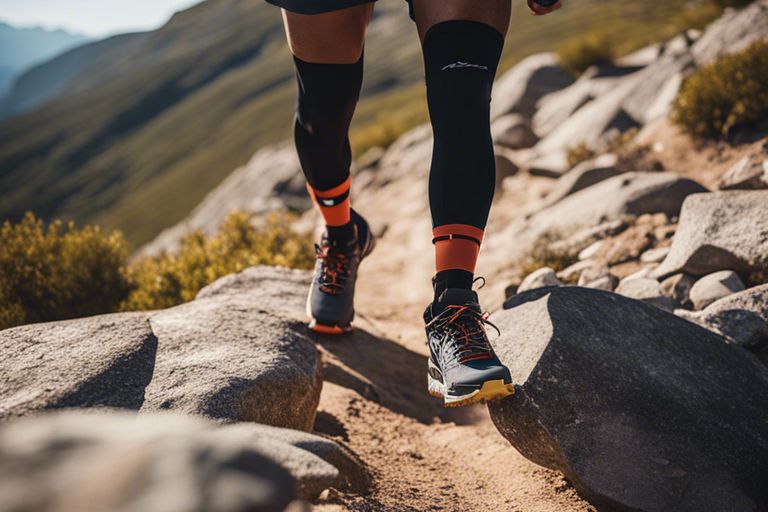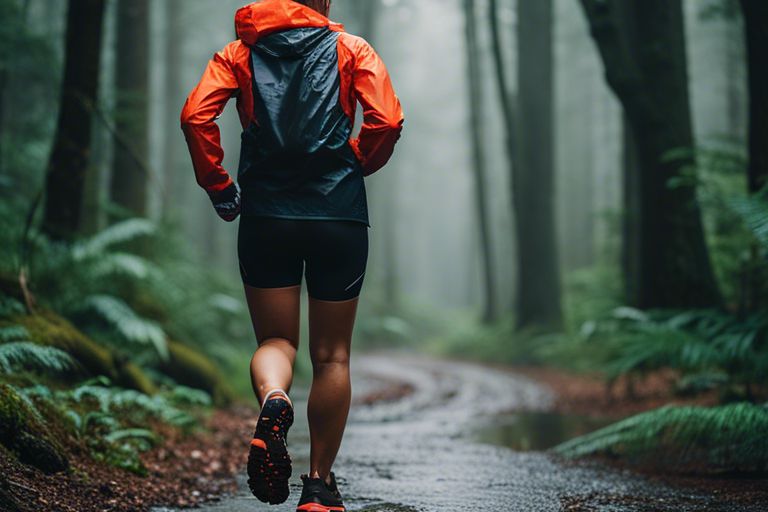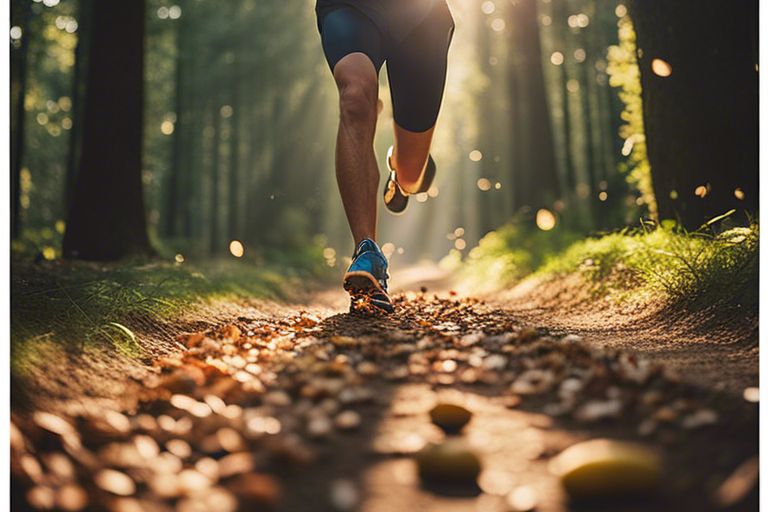When taking on the challenge of jogging on rocky terrain, having the right gear can make all the difference in your performance and overall experience. From sturdy trail running shoes with ample cushioning and grip to moisture-wicking clothing that keeps you dry and comfortable, choosing the best jogging gear is vital. In this blog post, we will discuss the must-have items to consider for your next rocky terrain run, ensuring you stay safe, comfortable, and able to tackle any obstacles that come your way.
Key Takeaways:
- Trail-specific shoes are vital for rocky terrain to provide traction and protect your feet.
- Invest in moisture-wicking clothing to keep you dry and comfortable during your run.
- Carry hydration packs to ensure you stay hydrated on longer trail runs in rocky terrain.
- Protect yourself from the elements with a weather-resistant jacket and sun protection gear.
- Consider using trail gaiters to keep debris out of your shoes and prevent blisters on rocky terrain.
Footwear for Rocky Terrain
Trail Running Shoes vs. Traditional Running Shoes
When tackling rocky terrain, it is crucial to choose the right footwear. While traditional running shoes are designed for flat surfaces and may lack the necessary grip and protection, trail running shoes are specifically crafted for rough terrain. They feature aggressive outsoles, durable uppers, and added protection to shield your feet from sharp rocks and uneven surfaces.
Key Features to Look for in Trail Running Shoes
When choosing trail running shoes for rocky terrain, there are some key features to keep in mind. Look for shoes with a rugged outsole for excellent traction, a rock plate for underfoot protection, a reinforced toe cap for durability, and a secure lacing system for a snug fit. Additionally, ensure the shoes have ample cushioning and support to handle the impact of running on uneven ground.
- Rugged outsole for excellent traction
- Rock plate for underfoot protection
- Reinforced toe cap for durability
- Secure lacing system for a snug fit
The key features mentioned above are important for providing stability, protection, and support while navigating rocky terrain. The rugged outsole will offer superior grip, the rock plate will shield your feet from jagged rocks, the reinforced toe cap will prevent abrasions, and the secure lacing system will ensure a comfortable and secure fit. Choose trail running shoes that prioritise these features for a safer and more enjoyable running experience.
Clothing for Rough Trails
Materials and Fabric Considerations
When choosing clothing for jogging on rocky terrain, it is crucial to consider the materials and fabrics used in the garment. Opt for moisture-wicking fabrics like polyester or nylon to keep you dry and comfortable during your run. Look for materials that offer stretch and durability to withstand the rugged terrain and potential snags from branches or rocks. Avoid heavy cotton fabrics that can weigh you down and retain moisture, leading to chafing and discomfort.
Weather-Appropriate Jogging Attire
It is imperative to dress appropriately for the weather conditions when jogging on rough trails. Layering is key to regulating your body temperature and staying comfortable. Choose a moisture-wicking base layer to keep sweat away from your skin, followed by a lightweight insulating layer and a weather-resistant outer layer to protect you from wind and rain. Don’t forget to wear a hat and gloves in cold weather to retain heat and protect your extremities.
Essential Accessories for Rocky Terrain
Hydration Solutions for Long Runs
Staying hydrated is crucial when running long distances on rocky terrain. To ensure you have access to water throughout your run, consider investing in a lightweight hydration pack or a handheld water bottle. These accessories will allow you to stay hydrated without slowing you down or hindering your performance on challenging terrain.
Protective Gear and Navigational Aids
When tackling rocky terrain, it is important to protect yourself from potential injuries and ensure you stay on the right path. Investing in protective gear such as knee pads, trail shoes with sturdy grips, and a reliable GPS watch can make a significant difference in your running experience. These accessories will not only keep you safe but also help you navigate through the rugged landscape with confidence.
Training and Safety Tips
- Building Endurance for Rocky Trails
- Navigating Hazards and Preventing Injuries
Building Endurance for Rocky Trails
When jogging on rocky terrain, it is imperative to focus on building endurance to tackle the challenging trails. Start by incorporating uphill climbs and downhill descents into your training routine. Engaging in interval training can also help boost your cardiovascular fitness and strengthen your muscles for the uneven terrain. Remember to gradually increase the intensity of your runs to prevent overexertion and potential injuries.
Navigating Hazards and Preventing Injuries
To ensure a safe and injury-free jogging experience on rocky terrain, it is crucial to be aware of potential hazards and take preventive measures. Always keep an eye out for loose rocks, tree roots, and uneven surfaces that can cause trips and falls. Utilise appropriate footwear with good traction and ankle support to minimise the risk of twisting an ankle. Any signs of fatigue or discomfort should not be ignored, as pushing yourself beyond your limits could lead to serious injuries.
The Best Jogging Gear for Rocky Terrain
When navigating rocky terrain while jogging, the right gear is crucial. Opting for trail running shoes with sturdy soles for better grip and ankle support is vital. Pairing these shoes with moisture-wicking, comfortable socks to prevent blisters is key. Additionally, wearing lightweight, breathable clothing that allows for ease of movement while still providing protection is advisable. Carrying a hydration pack or wearing a hydration belt is also recommended to stay hydrated on longer runs. Lastly, don’t forget to protect your eyes with polarised sunglasses and apply sunscreen to shield your skin from the sun’s harmful rays. By investing in the right gear, you can ensure a safe and enjoyable jogging experience on rocky terrain.
FAQ
Q: What are the key features to look for in the best jogging gear for rocky terrain?
A: The best jogging gear for rocky terrain should have excellent traction to provide stability, durable soles to withstand rough surfaces, and reliable ankle support to prevent injuries.
Q: How important is ankle support in jogging gear for rocky terrain?
A: Ankle support is crucial in jogging gear for rocky terrain as it helps prevent sprains and twists on uneven surfaces, providing stability and protection to the ankles.
Q: What material is best for jogging shoes suitable for rocky terrain?
A: Jogging shoes for rocky terrain are best made of durable, lightweight materials such as synthetic mesh or Gore-Tex, providing both breathability and protection from sharp rocks.
Q: How should one maintain jogging gear for rocky terrain?
A: To maintain jogging gear for rocky terrain, regularly clean off dirt and debris, inspect for any signs of wear and tear, and replace worn-out parts such as soles or laces to ensure optimal performance.
Q: Are there any specific clothing recommendations for jogging on rocky terrain?
A: It is recommended to wear moisture-wicking and breathable clothing that allows for freedom of movement when jogging on rocky terrain. Avoid loose clothing that may snag on rocks and cause accidents.






